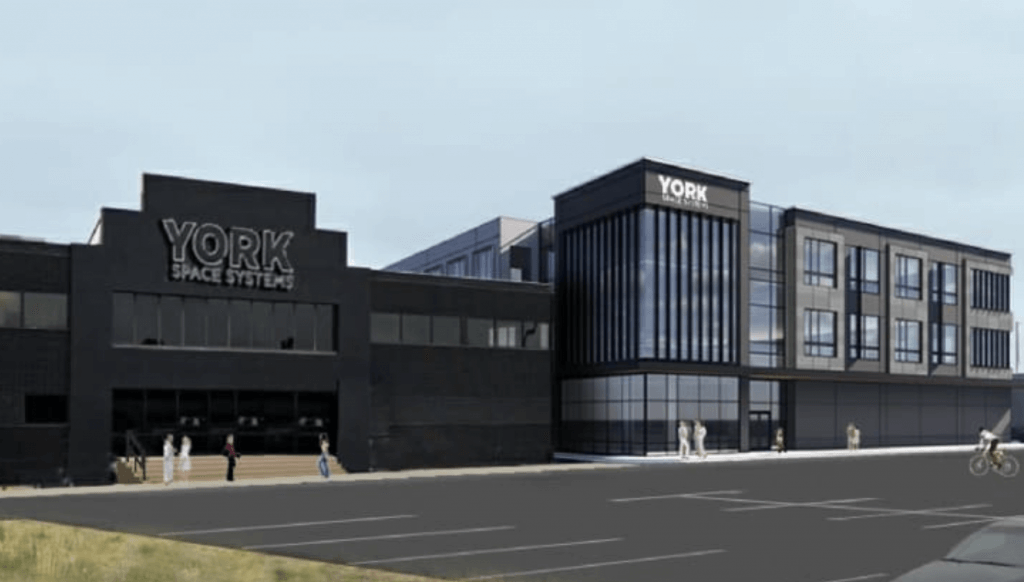
Satellite supplier with in-house production bid the lowest price for DoD constellation (Image Credit: Space News)

WASHINGTON — Of the three companies selected by the Space Development Agency to produce 126 satellites, only one, York Space Systems, manufactures satellites in-house.
That likely explains why York Space’s bid for 42 satellites was nearly half the price of what the other two winners bid for the same number of satellites, Frank Turner, technical director of the Space Development Agency (SDA), said March 21 at the Satellite 2022 conference.
SDA last month awarded three contracts: $700 million to Lockheed Martin, $692 million to Northrop Grumman and $382 million to York Space for the Transport Layer Tranche 1. Each company has to deliver 42 satellites by 2024.
The Transport Layer will be the Defense Department’s first-ever internet in space — a network of small satellites in low Earth orbit to support military communications, surveillance and tracking of enemy targets.
Turner pushed back on suggestions that SDA did not reward bidders for competitive pricing. “Did we pick the most expensive? Actually we didn’t,” he said, noting that the three companies selected ranked first, third and fourth on pricing from a total of eight bids.
“I want to be very clear that when we put the requirements out for companies to bid against, the requirements are set, and we asked for the best possible firm fixed price bid, and that’s what everybody sent us,” said Turner.
It’s obvious that one of them was much lower than the others, he added. What likely explains that is that York Space internally manufactures its satellites whereas Lockheed Martin and Northrop Grumman are buying the satellite buses from partner companies. “That is something that we’re seeing on both of our first two tranches, that one company is much lower than the other,” he said.
“When you see the three awards that we made, two to very large traditional defense primes that are not building their own satellites, they’re actually buying them,” Turner said. “Only one of our primes is literally building their own buses. And I think we’re seeing that in some of the costs that we’re getting.”
The winners were selected based on their ability to “meet the requirements with a commoditized bus on the schedule that we need, at a reasonable fixed price,” he said.
Turner said SDA is trying to create a competitive marketplace with real opportunities for companies to win satellite contracts every two years. The agency has said it wants to avoid “vendor lock,” or becoming dependent on a single vendor for any product or service.
However, two of the winners of Transport Layer Tranche 1 — Lockheed Martin and York Space — also won Transport Layer Tranche 0 in 2020.
That seems to contradict SDA’s rhetoric, Turner said. The agency is aware of that and is trying to figure out ways to open up the playing field despite government contracting rules that often favor incumbents because they have more experience.
“That’s actually something that has bothered me a little bit since we did the acquisition for the latest round of satellites,” he said. “We firmly believe at SDA that we do not have incumbents. We firmly believe that what we’re trying to do is create a marketplace and send a demand signal to the market.”
“The problem is we’re struggling a little bit to actually put our money where our mouth is, so to speak,” he said. “Two of our Tranche 0 incumbents got a Tranche 1 contract, not because we believe in incumbents but because they wrote the best proposals and as the government, that’s what we get to pick.”
SDA also is concerned about lower-tier suppliers, said Turner.
In some instances there is one provider of certain components that is supporting all three Transport Layer prime contractors. “So we’ve got single points of failure built into our system.”
“The government is still struggling with how to do this,” Turner added. SDA, a three-year-old agency, is trying to come up with a new business model and is learning on the go.








